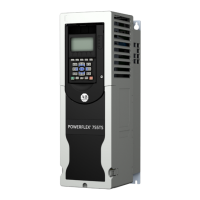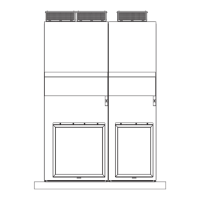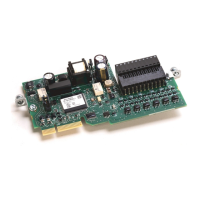Behavior models used in CIP Motion
82 Rockwell Automation Publication MOTION-RM003I-EN-P - February 2018
condition is reached in the forward path. The anti-windup feature is conditioned
by the arithmetic sign of the integrator's input. The integrator is held when the
input's sign is such that the integrator output moves further into the active limit.
In other words, the integrator is allowed to operate (not held) when the input
would tend to bring the integrator output value off the active limit.
The integrator may also be configured for integrator hold operation. When the
Integrator Hold attribute is set true, the regulator holds the integrator from
accumulating while the axis is being commanded to move. This behavior is helpful
in point-to-point positioning applications.
An automatic preset feature of the velocity regulator's integral term occurs when a
transition is made from a Torque Control mode to speed control, by using the
Control Mode selection parameter. Upon transition to speed mode, the speed
regulator's integral term is preset to the motor torque reference parameter. If the
speed error is small, this provides a 'bumpless' transition from the last torque
reference value present just prior to entering speed mode.
Negative Feedforward
Aside from the normal PI control elements, a negative feedforward gain (Knff ) is
provided to adjust the time response of the velocity regulator. Knff has a range of
0…100%, where 0 disables the function. A value of 30% results in little noticeable
overshoot in the speed response to a step input. This can be easily observed when
the motor speed is ramped to zero. The effect of negative feedforward is to
eliminate backup of the motor shaft. The Knff gain setting has no effect on the
stability of the speed regulator. A disadvantage of by using negative feedforward is
that it results in a time lag in feedback response to a reference ramp input.
Velocity Droop
Another feature of the velocity regulator is the velocity droop function. The
velocity error input to the integral term is reduced by a fraction of the velocity
regulator's output, as controlled by the droop gain setting, Kdr. As torque loading
on the motor increases, actual motor speed is reduced in proportion to the droop
gain. This is helpful when some level of compliance is required due to rigid
mechanical coupling between two motors.
Acceleration Feedforward
The velocity loop requires a non-zero velocity loop output to generate steady- state
axis motor acceleration. To provide the non-zero output from the drive to the
motor, a non-zero velocity error is generally required. In Position Control
applications, this non-zero velocity error translates to a non-zero position loop
error.

